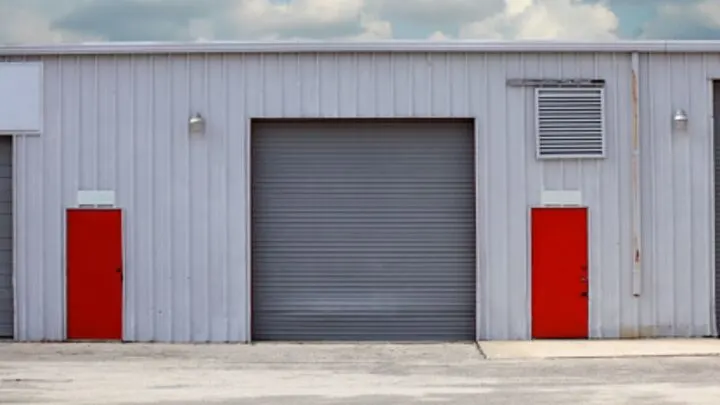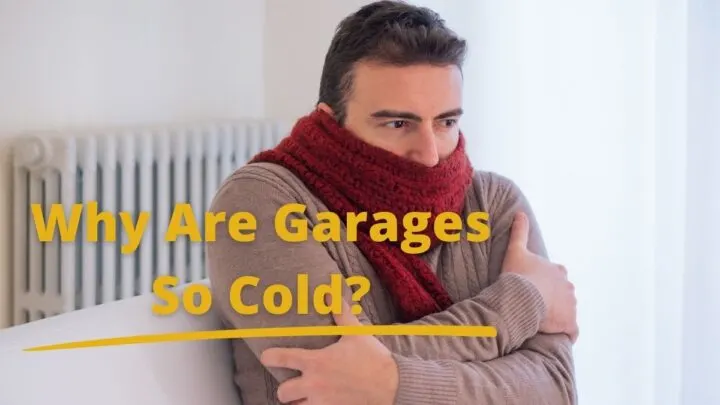The temperature may be warm right now, but once the winds get chilly, many garage owners are forced to question why garages are so cold.
Garages are a part of our home, right? So why do they get so cold in the winters when the rest of our home welcomes us with a warm and cozy environment? And why does it get equally hot in the summers?
This is because the garages are not designed to be warm when the temperature outside is frigid.
Garages are cold because they are often uninsulated, have poorly sealed exterior doors, and are not connected to the home’s HVAC system. Additionally, the opening and closing of large garage doors allow warm air to escape and cold air to flow in.
Maintaining the temperature in any part of the house costs money.
Insulating our homes to keep them warm during winters is our top priority, but the garage is often not thought of as a priority unless you spend a lot of time in there.
We visited several different insulation experts to discuss the matter so we can make this guide to help you understand why your garage gets so cold and how you can keep it the other way round.
Why Does My Garage Get Cold?
The factors mentioned below are probably the culprit for your garage getting cold. Look into these reasons and follow the solutions to fix your garage.
1. Check for Gaps and Damaged Panels
The garage doors go through a lot of wear and tear over time.
There can be many reasons for your garage door damage, leading to lifted corners of individual panels creating gaps.
While the garage doors are not weather-resistant in the first place, they can still retain some warmth by keeping the external elements on the outside.
But with damaged and lifted panels, air can easily get in and increase the temperature.
Besides that, these gaps are also enough to allow rainwater and snow to sneak in and make your garage chilly.
2. Does the Door Go All the Way to the Floor?
Like gaps and damaged panels, a garage door that does not go all the way to the floor can let air in and force you out of your garage sooner than you want.
There can be several reasons for the garage door not to seal the floor entirely.
The door might be old and rusty, and its mechanisms might not be working properly.
The same reasons that can create gaps in the door can also damage it, so it does not close completely.
A poorly-hung door is another sign of damage due to worn-out springs.
Even the slightest gaps between the door and the floor are enough to let the external elements in, including air, moisture, water, and snow, which will drop the temperature several degrees.
3. Are the Panels Insulated?
Your door might be in the perfect condition, but your garage could still make you feel like you’re standing in the middle of a snowfield.
That is probably because most garage doors are not usually insulated.
Generally, garage doors are thin metal sheets only to act as a door for protection against outsiders, but not from the chilly wind blowing outside.
They will stop the wind from entering the garage, but since they are metal and uninsulated, they can get cold quickly and easily.
The cold can spread to the walls, and even the slightest ventilation from the house entrance can circulate the chilliness.
So, how can you keep your garage from getting cold? We discuss the best solutions below.

Insulate the Garage Doors
If your garage door is not insulated, doing so should be your top priority.
Finding solutions other than that will waste your resources as an uninsulated garage door will still bring the temperature down inside.
You don’t have to change the garage door if it is in good shape – simply get it insulated by a professional or use an insulation kit.
Fiberglass batt and foam boards are the most common solutions for insulation.
However, it is best to replace the door with a new and insulated model if it is old, bent, and cranky.
The new doors come with the R-value that allows you to measure how effective the insulation is compared to the walls.
These new doors do not weigh much and are available in various colors and designs.
Insulate the Garage Walls
The basic rules of physics tell us that heat travels through solid surfaces, including your garage walls.
Therefore, applying insulation to the garage walls will ensure that the heat stays intact and chilly wind cannot affect the indoor temperature.
Walls are insulated with the same materials that you can use to insulate the garage door: fiberglass batt and foam boards.
To enhance protection, get your walls and door treated with the materials simultaneously.
Consider Caulking
You can get any heater, but your garage still won’t be able to retain heat because of the gaps and lifted corners we talked about earlier.
You can call for professional services for a long-term solution.
On the other hand, you solve this problem efficiently by using an application gun to caulk or seal the gaps between two surfaces, so there is no air leak.
Summing Up Why Garages Get Cold
During the winter months, our garages can get downright frigid. The main reason for this is a lack of proper insulation in most garages.
A few simple fixes are to get your door or walls insulated, as well as to make sure there are no gaps anywhere under the door or in the walls.


